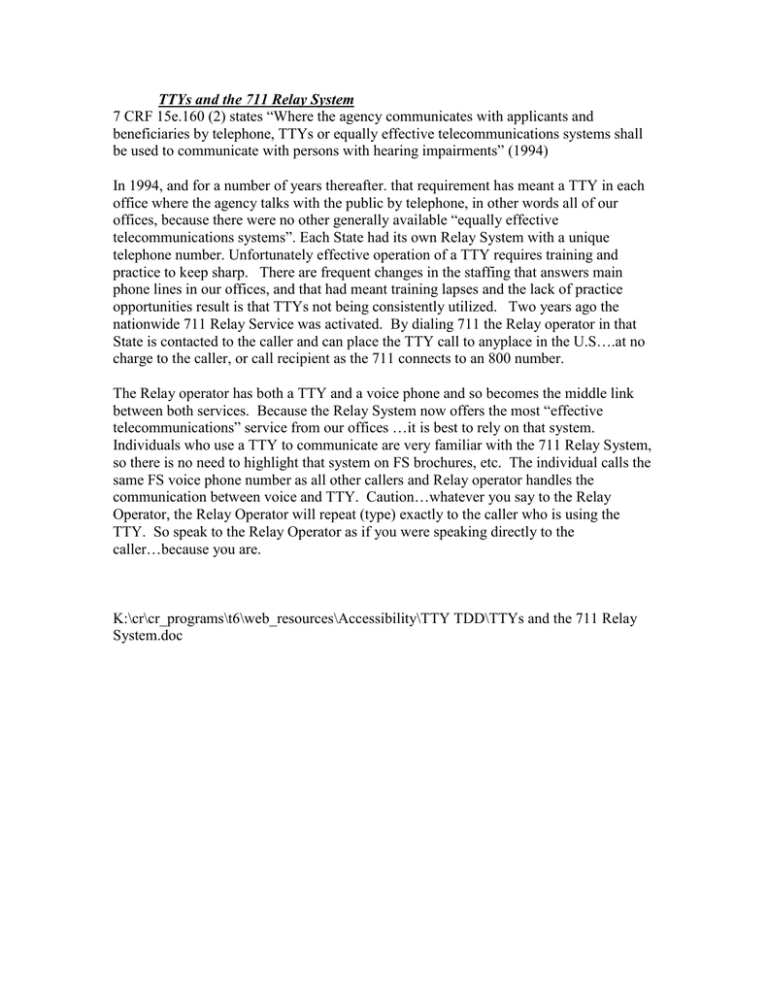7 CRF 15e.160 (2) states “Where the agency communicates with... beneficiaries by telephone, TTYs or equally effective telecommunications systems shall
advertisement

TTYs and the 711 Relay System 7 CRF 15e.160 (2) states “Where the agency communicates with applicants and beneficiaries by telephone, TTYs or equally effective telecommunications systems shall be used to communicate with persons with hearing impairments” (1994) In 1994, and for a number of years thereafter. that requirement has meant a TTY in each office where the agency talks with the public by telephone, in other words all of our offices, because there were no other generally available “equally effective telecommunications systems”. Each State had its own Relay System with a unique telephone number. Unfortunately effective operation of a TTY requires training and practice to keep sharp. There are frequent changes in the staffing that answers main phone lines in our offices, and that had meant training lapses and the lack of practice opportunities result is that TTYs not being consistently utilized. Two years ago the nationwide 711 Relay Service was activated. By dialing 711 the Relay operator in that State is contacted to the caller and can place the TTY call to anyplace in the U.S….at no charge to the caller, or call recipient as the 711 connects to an 800 number. The Relay operator has both a TTY and a voice phone and so becomes the middle link between both services. Because the Relay System now offers the most “effective telecommunications” service from our offices …it is best to rely on that system. Individuals who use a TTY to communicate are very familiar with the 711 Relay System, so there is no need to highlight that system on FS brochures, etc. The individual calls the same FS voice phone number as all other callers and Relay operator handles the communication between voice and TTY. Caution…whatever you say to the Relay Operator, the Relay Operator will repeat (type) exactly to the caller who is using the TTY. So speak to the Relay Operator as if you were speaking directly to the caller…because you are. K:\cr\cr_programs\t6\web_resources\Accessibility\TTY TDD\TTYs and the 711 Relay System.doc



